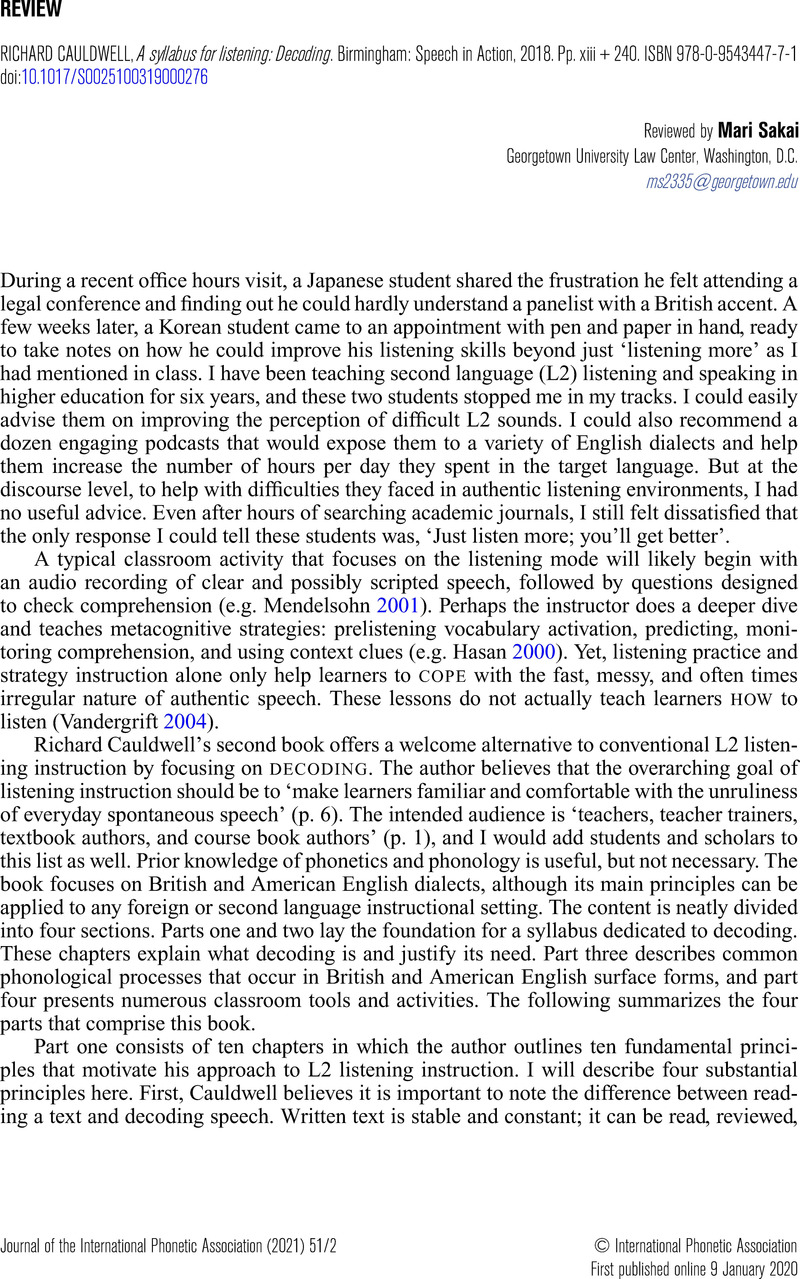Crossref Citations
This article has been cited by the following publications. This list is generated based on data provided by Crossref.
Jia, Chengyuan
and
Hew, Khe Foon
2023.
Meeting the challenges of decoding training in English as a foreign/second language listening education: current status and opportunities for technology-assisted decoding training.
Computer Assisted Language Learning,
Vol. 36,
Issue. 5-6,
p.
1116.






